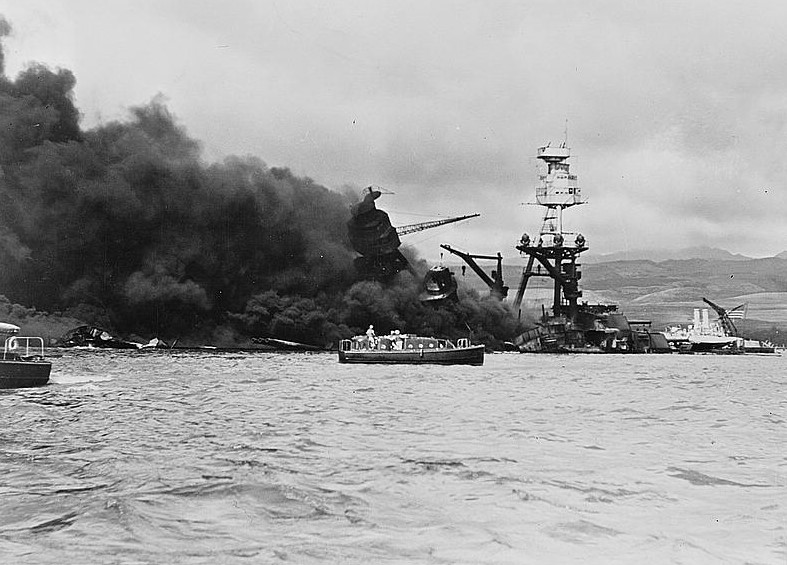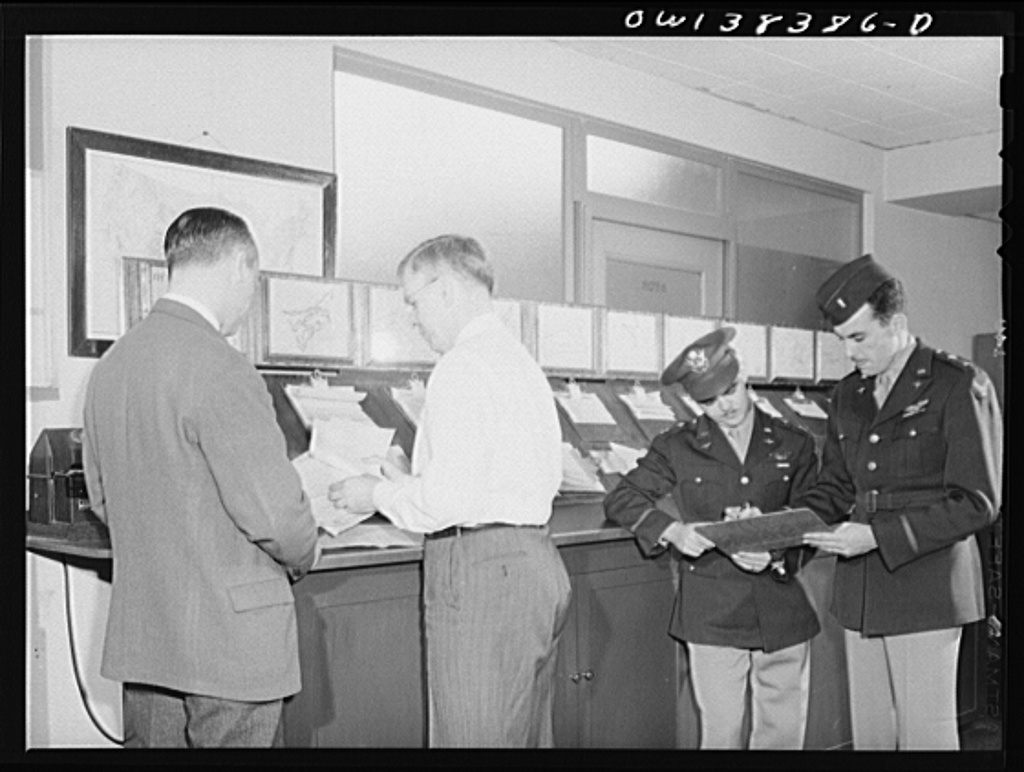Censoring the Weather During World War II - National Weather Service Heritage

Censoring the Weather During World War II
By Chris Geelhart (Chris.Geelhart@noaa.gov)Above: Wreckage of USS Arizona at Pearl Harbor, Dec. 7, 1941. Library of Congress photo.
Following the attack on Pearl Harbor on December 7, 1941, and the nation's subsequent entry into World War II, an executive order defined the role of the Weather Bureau in the war effort. The primary work of the Weather Bureau became to furnish meteorological information of value for the military campaign, with a more direct relationship with the War Department and the Navy taking place. Circular Letter 170-41 emphasized this point:
"Every one of us -- every employee of the Weather Bureau -- is called to participate actively in giving maximum service for this purpose. The emergency calls for alert and constructive service which implements meteorological science to do its utmost in successful prosecution of the war. In the last war, the Weather Bureau worked under the handicap of shortage of personnel, rapid turnover, and long working hours. We face the same problems again and we know that the Bureau, as before, will make the best of the situation."
Significant concerns arose in regards to distribution of weather information. There was a fear the enemy could take advantage of the weather reports in their planning; earlier in the war, the meteorological data flow between Washington and London was cut off for that reason. The Weather Bureau made a series of actions to prevent its reports from falling into the wrong hands:

- While hourly observations continued at airport stations, person-to-person distribution of these observations was limited to Army and Navy representatives, and pilots and dispatchers for specific air lines.
- Weather maps and observation reports in its offices were kept out of sight, and locked in drawers when no one was in the office.
- Pilot briefings were made in such a way as to relay only whether or not a flight could be completed, rather than including the reasoning as to why the weather was occurring.
- General office tours were discontinued.
Distributing weather information to the public was trickier. It was recognized that radio broadcasts could be easily intercepted, and the popular signal flags containing the forecast were also seen as a vulnerability. Thus, a decision was made to limit weather information to newspapers and telephone.
A "Censorship Code" was issued by the Office of Censorship in Washington, applying to all newspapers. It requested the following restrictions on weather information in newspapers:
- Routine forecasts could only cover areas either at the publication city, or up to 4 states within 150 miles of the publication city. This was allowed to address locations that may have readers in multiple states, such as New York City.
- Weather observations (high and low temperature, and precipitation of at least 0.10") were limited to 20 locations outside the local area. However, no observations were allowed to be reported from the western U.S. (Montana, Idaho, Utah, Nevada, Arizona, California, or Washington).
- News stories warning of dangerous roads and streets from storms were also limited to a 150 mile radius.
- A roundup of weather news in one state was allowed, but multi-state roundups had to be cleared by a Weather Bureau office.
- Publishing sky conditions and exact temperature forecasts were not allowed. Temperature reports would be in general terms, such as "little change in temperature" or "much cooler." Wind forecasts were generally published without directions and with vague descriptions of speed, unless the exact speed was important. Heavy snow mention was considered "an aid to saboteurs."
By 1943, restrictions were eased a bit, and were eliminated in 1945 following the end of the war.
Information obtained from Circular Letters 170-41, 175-41, 176-41, 182-41, 183-41, 8-42; and "War Places Drastic Curb on Weather Service" from the January 1942 edition of Weather Bureau Topics and Personnel
